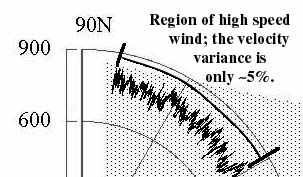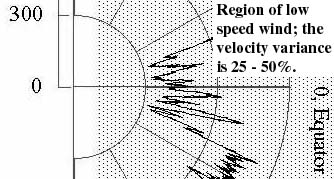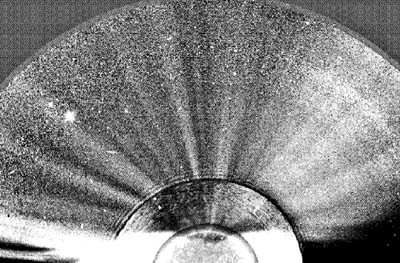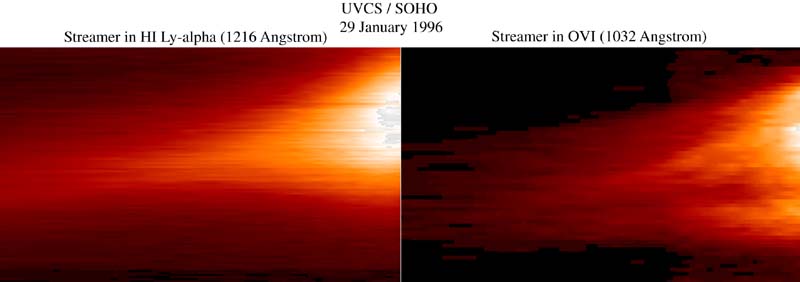Fast and Slow Solar Wind.
Ulysses, with its near polar 1.4 by 5.4 AU orbit, has given us a graphic picture (at the right) that solar wind comes in two states: an irregular slow wind with typical speeds of 400 km/s and a smooth fast wind with a speed of ~750 km/s. This is the "bimodality" of the solar wind, and is most apparent at solar minimum (when the data shown in the figure were taken). Fast wind comes from coronal holes and slow wind from the boundaries or interior of streamers. Solar Probe will encounter streamers in both 2010 and 2015 and will pass through coronal holes at 5-10 RS in 2015.Solar wind flow speed data is displayed in the "dial plot" at the right for the Ulysses "fast latitude scan". This was the interval from September 1994 to July 1995 when Ulysses swept from 2.2 AU and 80 degrees south heliographic latitude, up to the equator at ~1.4 AU, and then on up to 80 degrees north - again at 2.2 AU. This occurred very near solar sunspot minimum when there were well defined, large polar coronal holes and a bright equatorial streamer belt - very like how the Sun appeared when the image at the beginning of the introductory page was made.






